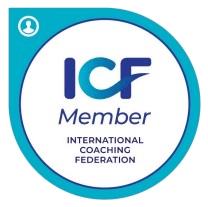Marginal Gains: A Physician’s Guide to Saving Time and Reducing Burnout
What if you could be more efficient and reclaim precious hours each week without cutting corners? Most physicians solve the problem of increasing workload by increased output. The solution isn’t always about working harder, it’s about working smarter. By embracing the concept of “marginal gains,” a strategy famously used to revolutionize British Cycling, physicians can implement small, strategic changes to significantly improve their workflow. With a few targeted adjustments, it’s possible to reduce charting time by 30% and design a professional life that is both sustainable and fulfilling.
The Power of Marginal Gains: A Lesson from Professional Sports
Between 2000 and 2012, British Cycling transformed from a team with zero Olympic gold medals to one with an astonishing 61. Their secret was a philosophy championed by Sir David Brailsford called “marginal gains.” Instead of pursuing a single, monumental breakthrough, the team focused on improving every conceivable aspect of their performance by just 1%. These changes enhancements, from equipment and nutrition to hygiene and sleep quality, were minor in isolation. However, when combined, their cumulative effect was groundbreaking.
This powerful strategy is not limited to athletics. Pilots use it. It is the cornerstone of quality improvement, particularly at the systems levels. Physicians can apply the same principle of marginal gains to their daily routines to create more balanced, efficient, and satisfying careers.
Why Marginal Gains Are Essential for Physicians Today
Burnout remains a critical and pervasive issue in the medical community. Despite some improvements since the peak of the COVID-19 pandemic, nearly half of all physicians continue to report symptoms. The relentless pressure, long hours, and overwhelming administrative tasks can feel insurmountable. Instead of attempting a complete career overhaul, the marginal gains approach offers a more manageable path to meaningful change.
By identifying and addressing the friction points in your daily workflow, you can implement small, consistent improvements that reduce stress, save time, and restore a sense of control. It’s about achieving big results by stacking small, incremental wins.
Five Practical Marginal Gains for Your Medical Practice
Ready to make a tangible impact on your workday? Here are five actionable strategies you can implement immediately:
- Optimize Your EHR Templates: Develop custom templates for common diagnoses and patient encounters. This simple step can save up to 12 minutes per patient, which quickly adds up to several hours of reclaimed time each week.
- Batch Review Lab Results: Designate specific, scheduled times to review lab results rather than addressing them sporadically throughout the day. Physicians who adopt this batching method report saving an average of 30 minutes daily.
- Implement Checklists for Routine Procedures: Create and use checklists for routine tasks, such as central line placements or patient discharges. As demonstrated by the Michigan central line checklist, which saved 1,500 lives in 18 months, these simple tools are proven to prevent errors and improve patient safety.
- Apply the Two-Minute Rule: If a task can be completed in less than two minutes, do it immediately. One emergency room physician successfully reduced their EMR inbox and messaging backlog by 70% using this simple but effective productivity principle.
- Record Patient Instructions: Instead of typing out detailed discharge instructions, consider using voice memos or pre-recorded templates. This not only saves valuable time but also enhances clarity and comprehension for patients and their families.
How Small Changes Compound into Major Results
These minor adjustments do more than just save time—they create invaluable mental space and significantly reduce decision fatigue. By developing and refining systems tailored to your specific needs, you can complete your charting before heading home, improve your sleep, and feel more empowered in your professional life.
For example, one resident who stacked dictation with walking between wards and templated common diagnoses saved 90 minutes per day in just six weeks. Another physician reclaimed essential focus time for complex cases by delegating non-urgent alerts to their support team, thereby minimizing interruptions.
Your Two-Phase Prescription for Getting Started
Ready to embrace the power of marginal gains? Follow this two-phase plan to begin transforming your practice:
Phase 1: Identify Your Friction Points
During your next shift, consciously observe and note three moments where tasks create frustration or slow you down. These might include reviewing lab results, repeating patient instructions, or rewriting similar notes for multiple encounters. Pinpoint these areas to focus your initial improvement efforts.
Phase 2: Stack Habits and Log Near Misses
Link new, efficient practices to your existing habits. For instance, review your notes while drinking your morning coffee or check vitals immediately after handwashing. Additionally, maintain a “near-miss” log to identify recurring system issues and address them proactively. This preventative approach has helped institutions like Virginia Mason Medical Center reduce their liability premiums by 74%.
Conclusion: Start Small, Aim Big
Physician burnout is not a personal failure; it is a systemic problem driven by broken processes and unsustainable demands. However, these systems can be improved, one small change at a time. By adopting the marginal gains mindset, you can methodically rebuild your workflow, reduce chronic stress, and rediscover satisfaction in your career.
Take the first step today. Pick one 1% improvement to try this week—whether it’s templating a note, batching lab reviews, or starting a near-miss log. One small change can be the catalyst for a profoundly positive transformation.





